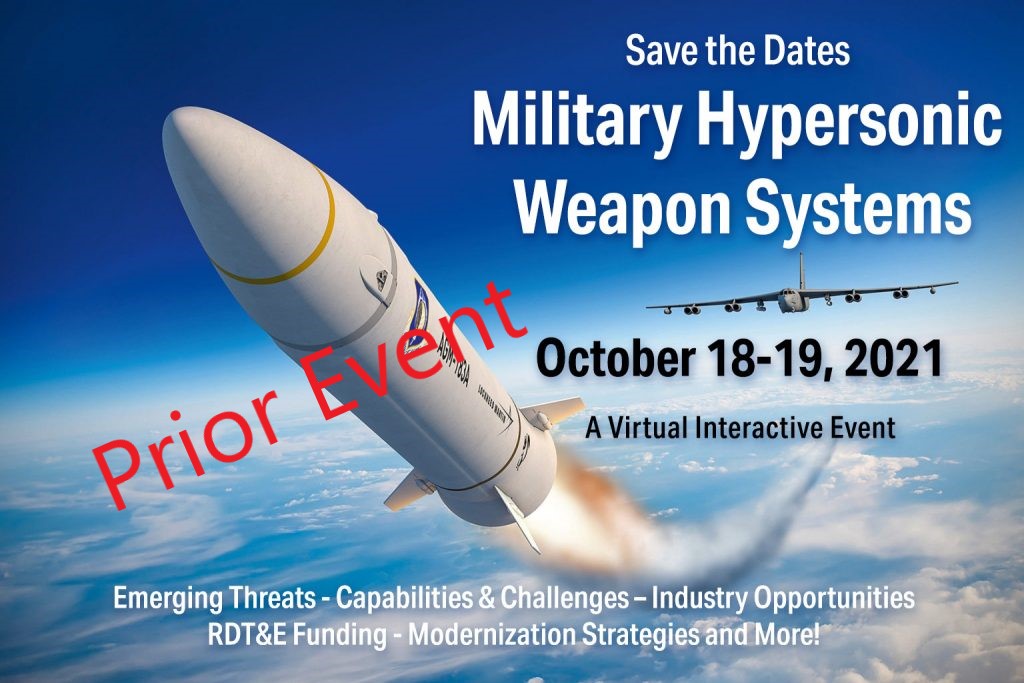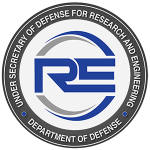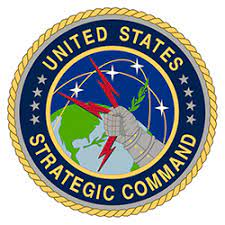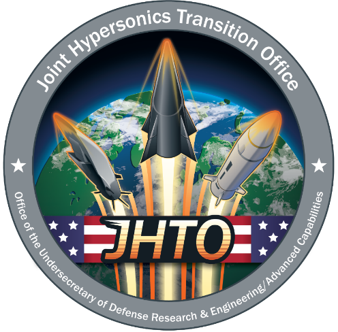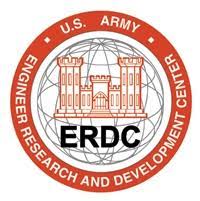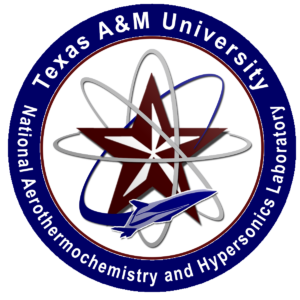Military Hypersonic Weapons Systems
(Defense – Government – Industry – Opportunities)
About the Program
Hypersonic Weapons are accelerating the pace at DoD for the evaluation of potential weapon system concepts and mission sets. As DoD is preparing for $10 billion to enable fielding of Hypersonic Glide Vehicles (HGV) within the next five years, this has created a surge of a rapid R&D for Hypersonic Technologies. Hypersonic Glide Vehicles (HGV) are launched from a rocket before gliding to a target and alternatively, Hypersonic cruise missiles are powered by high-speed, air-breathing engines, or commonly referred to as “scramjets,” after acquiring their target.
Opportunities for Industry:
Evaluation of the U.S. hypersonic test and evaluation infrastructure, the Institute for Defense Analyses noted that “no current U.S. facility can provide full-scale, time-dependent, coupled aerodynamic and thermal-loading environments for flight durations necessary to evaluate these characteristics above Mach 8.” Unlike programs in China and Russia, most U.S. hypersonic weapons are to be conventionally armed. As a result, U.S. hypersonic weapons will likely require greater accuracy and will be more technically challenging to develop than nuclear-armed Chinese and Russian systems. There are many technical challenges to overcome, Hypersonic weapons could challenge detection and defense due to their speed, maneuverability, and low altitude of flight. For example, terrestrial-based radar cannot detect hypersonic weapons until late in the weapon’s flight.
A transition to a new warfighting doctrine with multi-domain ops as it was initially defined through the Army, will now change how the joint force must approach the long-range strike missions. While industry has developed warheads, glide bodies and other components, there is no industrial base equipped to manufacture hypersonic weapons. “As hypersonic missiles become a reality, industry is going to have to relearn how to effectively, efficiently and economically produce them while industry has developed warheads, glide bodies and other components, there is no industrial base equipped to manufacture hypersonic weapons.”
– Michael Griffin, Pentagon’s Undersecretary of Defense for Research and Engineering
Program Themes Include:
- DoD Hypersonic Systems: Programs and Emerging Capabilities and Opportunities for Industry
- Space Based Hypersonic Tracking Sensors & Ground Based Interceptor Capabilities and Requirements
- Ground Launched/Ground Based Strategic Deterrents
- Advancements in Hypersonic Glide Vehicles (HGV) & Long Range SCRAMJET Missile Technologies
- Hypersonic Defense Modular System Architecture and Industrial Engineering Challenges
- Position, Navigation (PNT) Needs & Requirements
- AI and Machine Learning: Needs, Requirements and Future Potential Capabilities
- Fielding and Testing of Hypersonic: Plans and Strategies
Why attend:
Attending this Program will provide each virtual attendee the opportunity to obtain invaluable information on the emerging opportunities within DoD, Government and Industry Markets found nowhere else in an intimate live virtual setting. Each Hypersonic Weapon Systems program representatives will closely examine emerging technologies and present in 30-minute sessions over three days while also thoughtfully interacting with attendees during their dedicated Q&A sessions.
